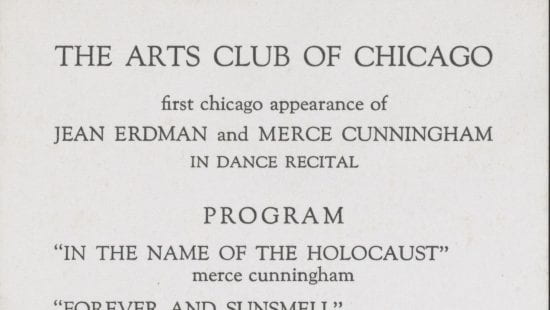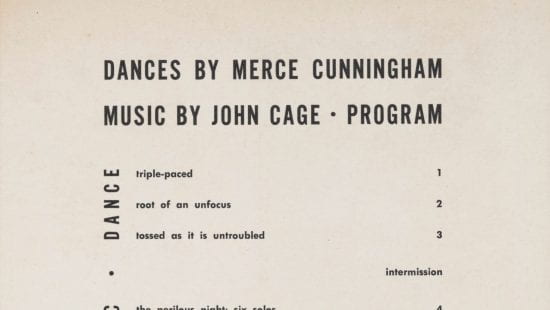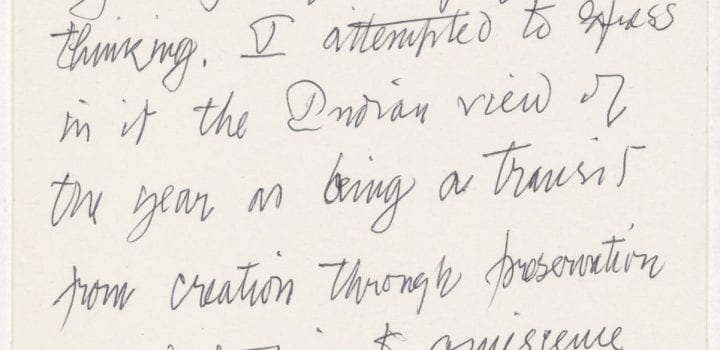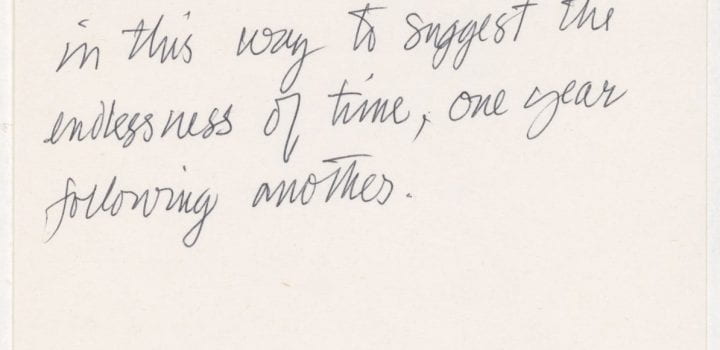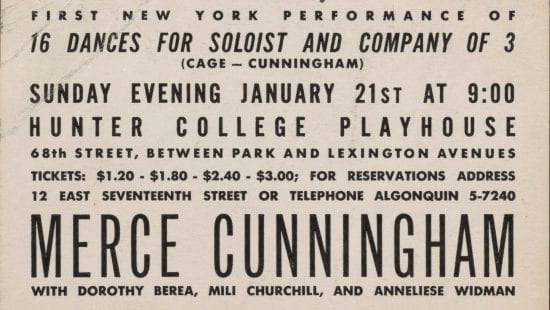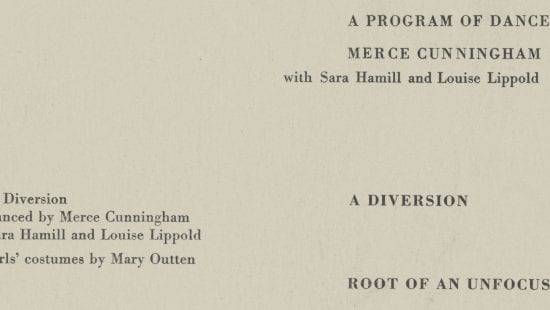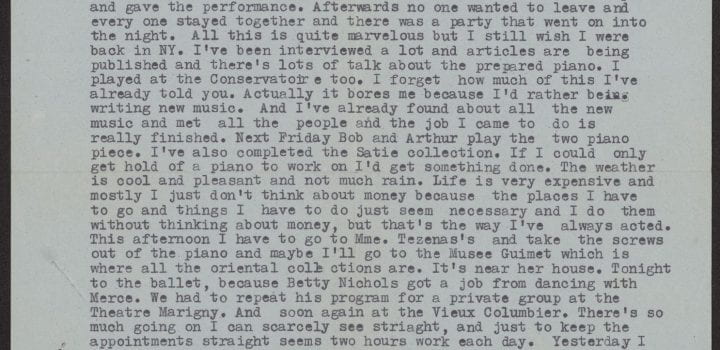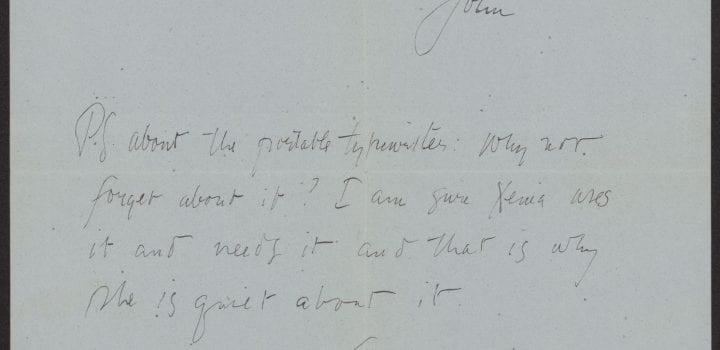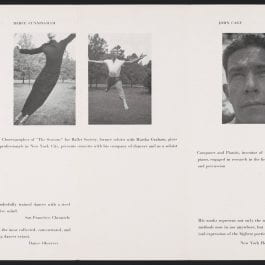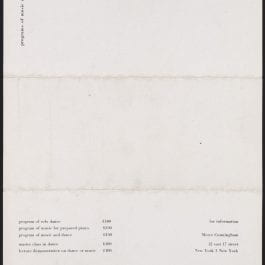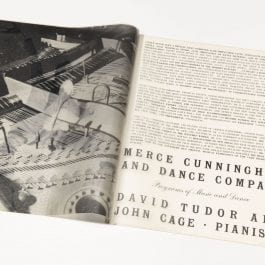Early Work
Merce Cunningham and John Cage met at the Cornish School of the Arts in Seattle, where Cunningham studied dance and Cage was an accompanist for Bonnie Bird’s dance classes. Then married to Xenia Cage, Cage performed with Cunningham via Cornish School performances. The two became reacquainted later in New York in the 1940s with Jean Erdman as their connection.
Program, The Arts Club of Chicago, 1943
Cunningham and Cage’s first collaborative work, Credo in Us, with music by Cage and choreography by Erdman and Cunningham, was first performed at Bennington College in 1942 and later revised. A revised version premiered in New York and later was performed at the Arts Club in Chicago in 1943, sharing a bill with the one-time only performances of In the Name of the Holocaust and Shimmera.
The Seasons
The Seasons was commissioned by Lincoln Kirstein for the Ballet Society (later the New York City Ballet) and premiered in 1947. Click the images below to read Cage’s undated handwritten notes on his music for this ballet, which read:
“The Seasons was written for the ballet by Merce Cunningham of the same title. And in the late ‘forties when I was beginning my study of Oriental thinking. I attempted to express in it the Indian view of the year as being a transit from creation through preservation and destruction to quiescence, from spring through summer and fall to winter.”
Chance Operations
Handbill, 16 Dances for Soloist and Company of 3, Hunter College, New York City, 1951
In the 1950s Cage and Cunningham both began to use chance operations in composition, using the I Ching, a Chinese text, to decide elements of the pieces. Sixteen Dances for Soloist (and Company of Three) marks Cunningham’s first use of chance operations in composition.
Black Mountain College
Program, “A Program of Dances,” Black Mountain College, Aug. 20, 1948
Black Mountain College, the experimental college located outside Asheville, North Carolina, was an important creative nexus for artists and thinkers such as Buckminster Fuller, Ruth Asawa, Willem and Elaine de Kooning, and members of the Bauhaus School. Cunningham and Cage attended summer sessions for many years, and important moments in their careers occurred here: The Merce Cunningham Dance Company was founded in 1953; and Cage’s Theatre Piece, regarded by some as the first “happening,” was performed in 1952.
Travels to Europe
Cage sent many newsy letters home during a European trip with Cunningham, and his mother preserved them in a scrapbook. Here, Cage describes how he and Cunningham worked with “two girls from Ballet Society: Tanaquil LeClercq and Betty Nichols. We met them in front of Notre Dame and in a week Merce made a duet and a trio and we wrote out all the invitations and rented a piano and gave the performance” at painter Jean Hélion’s studio. (Cunningham later wrote: “If you have three days to make a duet (this happened once in Paris with Tanaquil Le Clercq), do you worry about ideas, or do you make a dance involving two people, a man and a woman, together.”)
Cage also describes the local reaction to their work: “Everyone finds my work and Merce’s just astonishing, because they haven’t had anything like it here and they just stand around open-mouthed in amazement.”
Marketing Strategies
The brochures featured below showcase some of Cunningham and Cage’s early marketing strategies. The first undated brochure (pictured unfolded front and back), one of their earliest marketing efforts, Cage and Cunningham offered performances, master classes and lectures with pricing between $100 and $300. They also offered a “package festival” with writer and artist M.C. Richards, which included up to three days of options for the hosting group to pick and choose from to create a festival of their choice. The Cage Correspondence collection includes numerous copies of letters sent to groups and schools across the country soliciting this package festival.
The second brochure (pictured front cover and inside) is another undated marketing tool with a glassine cover which includes promotion for David Tudor, renowned avant-garde pianist and composer.

